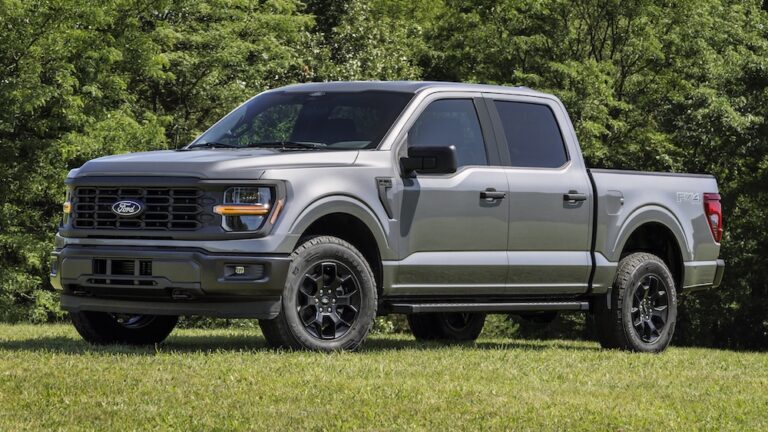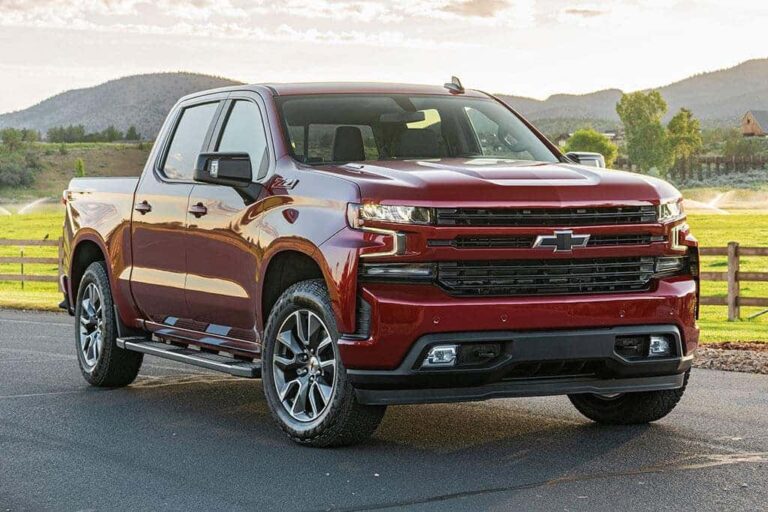What Is A U-Haul Trailer? Your Comprehensive Guide to DIY Moving and Hauling
What Is A U-Haul Trailer? Your Comprehensive Guide to DIY Moving and Hauling cars.truckstrend.com
Moving, hauling, or simply needing to transport items too large for your personal vehicle can often feel like a monumental task. This is where the humble yet incredibly versatile U-Haul trailer steps in, transforming daunting logistics into manageable DIY projects. Far more than just a metal box on wheels, a U-Haul trailer is a key component of the world’s most accessible do-it-yourself moving and storage solutions, empowering individuals and families to take control of their relocation or hauling needs without the prohibitive costs or complexities of professional movers.
At its core, a U-Haul trailer is a non-motorized vehicle designed to be towed behind another vehicle, typically a car, SUV, or pickup truck. These trailers come in various shapes and sizes, each engineered for specific hauling purposes, from safeguarding precious household goods to transporting vehicles or bulky construction materials. Their importance lies in offering an affordable, flexible, and convenient alternative to renting a full-sized moving truck, especially for smaller moves, transporting specific items, or when you already own a capable towing vehicle. This comprehensive guide will delve into every aspect of U-Haul trailers, from understanding their types and benefits to mastering the art of safe towing and planning your perfect move.
What Is A U-Haul Trailer? Your Comprehensive Guide to DIY Moving and Hauling
Understanding the U-Haul Trailer Ecosystem
A U-Haul trailer is essentially an extension of your towing vehicle, providing additional cargo capacity. It comprises several critical components: a sturdy frame, an axle (or multiple axles) with wheels, a lighting system for road safety, safety chains, and most importantly, a "tongue" with a coupler that attaches securely to your towing vehicle’s hitch ball.
The primary purpose of a U-Haul trailer is to transport goods that exceed the capacity of a standard vehicle. This could range from a college student moving dorm room essentials, a family relocating their entire household across state lines, or a homeowner picking up lumber for a DIY project. U-Haul’s expansive network of locations makes these trailers readily available, ensuring that whether you’re moving across town or across the country, a solution is usually within reach.
Types of U-Haul Trailers: Tailored for Every Need
U-Haul offers a diverse fleet of trailers, each designed with specific hauling tasks in mind. Understanding the differences is crucial for selecting the right equipment for your job.
1. Cargo Trailers (Enclosed)

These are the most common type for household moves, providing protection from weather and enhanced security. They come with a lockable door and a low loading deck, often with a ramp for easy access.
- 4×8 Cargo Trailer: Ideal for small moves, studio apartments, or extra storage. Perfect for boxes, small furniture, or college dorm essentials.
- 5×8 Cargo Trailer: A popular choice for one-bedroom apartments, moving appliances, or small offices. Offers more space than the 4×8.
- 5×10 Cargo Trailer: Suitable for larger one-bedroom apartments or small two-bedroom homes. Can accommodate larger furniture pieces.
- 6×12 Cargo Trailer: The largest enclosed option, best for two to three-bedroom homes. Offers ample space for major appliances, sofas, and multiple boxes. It often features a wider opening and ramp for easier loading of bulkier items.

Benefits: Weather protection, security, easy loading, keeps items clean and contained.
2. Utility Trailers (Open)
These trailers are open-top, making them ideal for hauling items that might be too tall or awkwardly shaped for an enclosed trailer, or items that are not sensitive to weather. They often feature a low deck and a rear ramp for easy loading.

- 5×9 Utility Trailer with Ramp: Excellent for landscaping materials, ATVs, motorcycles, lawnmowers, or small construction debris. The ramp makes loading wheeled items simple.
- 6×12 Utility Trailer with Ramp: The largest utility option, suitable for transporting larger equipment, multiple motorcycles, or significant amounts of building materials.
Benefits: Versatility for oversized items, easy loading of wheeled equipment, no height restrictions.
3. Car Trailers (Vehicle Transport)
Designed specifically for moving vehicles, U-Haul offers two main types.
- Auto Transport Trailer: A full-platform trailer that supports all four wheels of the towed vehicle.
- Ideal for: Long-distance moves, all-wheel-drive (AWD) vehicles, or vehicles that cannot be towed with two wheels on the ground. Offers maximum security and protection for the transported vehicle.
- Tow Dolly: Supports only the front two wheels of the towed vehicle, with the rear two wheels remaining on the ground.
- Ideal for: Shorter distances, front-wheel-drive (FWD) vehicles. Generally lighter and less expensive than an auto transport trailer.
Benefits: Safe and secure vehicle transport, eliminates wear and tear on the towed vehicle, suitable for non-running vehicles.
Benefits of Choosing a U-Haul Trailer
Opting for a U-Haul trailer offers several compelling advantages over other moving or hauling methods:
- Cost-Effectiveness: Trailers are generally more affordable to rent than U-Haul moving trucks, especially for round-trip rentals. This can lead to significant savings on your overall moving budget.
- Fuel Efficiency: By utilizing your own vehicle, which is typically more fuel-efficient than a large moving truck, you can save on gas costs, particularly for longer distances.
- Flexibility and Convenience: U-Haul’s vast network means you can often find a trailer close to your location. You can rent for a single day or an extended period, and both one-way and round-trip options are available.
- Maneuverability: Towing a trailer can be less intimidating than driving a large, unfamiliar moving truck, especially in urban environments or tight spaces. Your personal vehicle’s familiar controls can ease the driving experience.
- DIY Control: You dictate the pace of your move, load and unload on your own schedule, and have complete control over your belongings.
- Reduced Licensing Requirements: In most places, a standard driver’s license is sufficient to tow a U-Haul trailer for personal use, unlike some larger commercial vehicles.
How to Rent a U-Haul Trailer: A Step-by-Step Guide
Renting a U-Haul trailer is a straightforward process, but careful planning ensures a smooth experience.
Step 1: Assess Your Needs & Towing Vehicle
- What are you moving? Determine the volume and type of items to choose the correct trailer size (e.g., boxes vs. a motorcycle).
- What is your towing vehicle? This is critical. U-Haul has strict requirements for towing vehicles based on trailer size and weight. Check your vehicle’s owner’s manual for its maximum towing capacity (GCWR – Gross Combined Weight Rating, and tongue weight capacity).
- Does your vehicle have a hitch? You’ll need a proper hitch receiver, a hitch ball (correct size for the trailer), and functioning wiring for trailer lights. If not, U-Haul offers installation services.
Step 2: Reserve Your Trailer
- Visit U-Haul’s website (Uhaul.com), use their mobile app, or call their reservation line. You can also reserve in person at a U-Haul center.
- Provide your desired pick-up and drop-off locations, dates, and the type of trailer you need.
- U-Haul’s system will verify if your towing vehicle is compatible with your chosen trailer. Be honest about your vehicle’s make, model, and year.
Step 3: Pick Up Your Trailer
- Arrive at the U-Haul location with your towing vehicle.
- The U-Haul representative will inspect your vehicle to ensure it meets safety requirements.
- They will assist you in securely attaching the trailer to your hitch, connecting the safety chains, and ensuring the trailer’s lights are working correctly. Pay close attention during this demonstration.
- Review the rental agreement, understand the insurance options (U-Haul offers supplemental coverage like Safetow®), and complete payment.
Step 4: Loading and Securing Your Items
- Weight Distribution is Key: Load heavier items first, positioning them over or slightly forward of the trailer’s axle(s). This ensures proper tongue weight (10-15% of the total loaded trailer weight) and prevents sway.
- Balance: Distribute weight evenly from side to side.
- Secure Everything: Use moving blankets to protect furniture and secure all items with tie-downs, ropes, or straps to prevent shifting during transit. Shifting cargo can cause dangerous sway.
- Do Not Overload: Stay within the trailer’s stated weight capacity. Overloading is extremely dangerous and can damage your vehicle and the trailer.
Step 5: Driving Safely with a Trailer
- Practice: If you’re new to towing, practice in a safe, open area.
- Reduce Speed: Drive slower than usual, especially on highways and in adverse weather.
- Increase Braking Distance: Your stopping distance will be significantly longer. Maintain extra space between your vehicle and others.
- Wider Turns: Account for the trailer’s length when turning. Make wider turns to avoid hitting curbs or other obstacles.
- Lane Changes: Plan lane changes well in advance and signal clearly.
- Backing Up: This is the most challenging part for many. Turn your steering wheel in the opposite direction you want the trailer to go. Small adjustments are key.
- Monitor: Periodically check your mirrors to ensure the trailer is tracking properly and your load hasn’t shifted.
Step 6: Returning the Trailer
- Return the trailer to the agreed-upon U-Haul location by the specified time.
- Ensure the trailer is clean and free of debris.
- The U-Haul representative will inspect the trailer and detach it.
Important Considerations and Potential Challenges
While U-Haul trailers offer immense utility, there are crucial factors to consider and potential challenges to address:
- Towing Vehicle Requirements: This is the single most important consideration. Your vehicle must have adequate towing capacity, a properly installed hitch receiver, a hitch ball of the correct size (1-7/8" or 2"), and a functioning wiring harness for trailer lights. Failure to meet these requirements will prevent you from renting.
- Hitch and Wiring Installation: If your vehicle isn’t equipped, U-Haul offers hitch and wiring installation services, but this adds to the cost and requires advance scheduling.
- Weight Distribution and Sway: Improper loading (too much weight in the rear or off-center) can lead to dangerous trailer sway, making the rig difficult to control. Always prioritize proper weight distribution.
- Driving Dynamics: Towing fundamentally changes how your vehicle handles. Acceleration will be slower, braking distances longer, and turns wider. High winds and uneven roads can exacerbate these effects.
- Fuel Economy Impact: Expect a noticeable decrease in your vehicle’s fuel efficiency due to the added weight and aerodynamic drag of the trailer.
- Insurance Coverage: Your personal auto insurance may cover basic liability, but it’s crucial to confirm. U-Haul offers supplemental coverage (Safetow®) that can provide additional protection against damage to the trailer or your belongings.
- Parking and Maneuvering: Parking a combined vehicle and trailer unit can be challenging, especially in crowded areas. Plan your stops carefully.
- Road Conditions and Weather: Driving with a trailer in heavy rain, snow, ice, or strong crosswinds significantly increases risk. Exercise extreme caution or consider delaying travel if conditions are severe.
Tips for a Smooth U-Haul Trailer Experience
- Plan Ahead: Reserve your trailer as far in advance as possible, especially during peak moving seasons (end of month, summer, holidays).
- Utilize U-Haul’s Resources: Their website offers excellent tools like a "Towing Guide" to check vehicle compatibility and a "Trailer Size Calculator" to help determine the right size.
- Pack Smart: Use uniform-sized boxes, label everything, and pack essentials separately. Use moving blankets and padding to protect fragile items.
- Perform a Pre-Trip Inspection: Before you leave the U-Haul lot, double-check the hitch connection, safety chains, lights, and tire pressure on both your vehicle and the trailer.
- Take Breaks: On long trips, stop periodically to rest, stretch, and re-check your load and trailer connections.
- Don’t Overpack: Resist the temptation to squeeze in "just one more thing" if it means exceeding weight limits or compromising safety.
- Consider a Round Trip: If you’re moving a short distance and plan to return to your origin, a round-trip rental is often cheaper than a one-way.
Estimated U-Haul Trailer Rental Prices
U-Haul trailer prices are highly dynamic and depend on several factors, including:
- Location: Prices vary by city and state.
- Demand: Peak seasons (summer, end of month) will see higher prices.
- Duration: Daily rates apply, but longer rentals may have a different structure.
- One-Way vs. Round-Trip: One-way rentals are generally more expensive due to logistics.
- Availability: Limited availability can drive up prices.
The table below provides estimated average daily rental rates for round-trip rentals. One-way rentals can be significantly higher and are often quoted per trip rather than per day. Additional costs include optional insurance (Safetow®), hitch/wiring installation (if needed), and fuel.
| Trailer Type | Size | Approximate Daily Rate (Round Trip) | Common Use Case |
|---|---|---|---|
| Cargo Trailers | 4×8 Enclosed | $14.95 – $19.95 | Small moves, dorm rooms, extra storage |
| 5×8 Enclosed | $18.95 – $24.95 | 1-bedroom apt, small office, appliances | |
| 5×10 Enclosed | $28.95 – $34.95 | Larger 1-bedroom, small 2-bedroom apt | |
| 6×12 Enclosed | $34.95 – $44.95 | 2-3 bedroom home, large furniture | |
| Utility Trailers | 5×9 Open w/ Ramp | $18.95 – $24.95 | Landscaping, ATVs, motorcycles, debris |
| 6×12 Open w/ Ramp | $28.95 – $34.95 | Large equipment, multiple vehicles, construction | |
| Car Trailers | Tow Dolly | $49.95 – $59.95 | FWD vehicles, shorter distances, no AWD |
| Auto Transport | $64.95 – $79.95 | All vehicle types, long distances, AWD, non-runners |
Disclaimer: These prices are estimates only and are subject to change without notice. Actual prices will be provided at the time of reservation by U-Haul. One-way rental prices are typically significantly higher and are quoted on a per-trip basis, not daily.
Frequently Asked Questions (FAQ) about U-Haul Trailers
Q1: Can I tow a U-Haul trailer with any car?
A: No. Your vehicle must meet specific towing requirements, including sufficient towing capacity, a proper hitch receiver, hitch ball, and working electrical connections for trailer lights. U-Haul’s website has a towing guide to check your vehicle’s compatibility.
Q2: Do I need a special driver’s license to tow a U-Haul trailer?
A: In most U.S. states and Canadian provinces, a standard Class D (or equivalent) driver’s license is sufficient for towing U-Haul trailers for personal use, as they typically fall below weight thresholds requiring commercial licenses. Always check your local Department of Motor Vehicles (DMV) for specific regulations.
Q3: What if my car doesn’t have a hitch or trailer wiring?
A: U-Haul offers professional hitch and wiring installation services at many of its locations. You can schedule this service when you reserve your trailer.
Q4: Are U-Haul trailers insured?
A: Your personal auto insurance policy may offer some coverage, but it’s crucial to verify with your insurer. U-Haul offers supplemental coverage options, such as Safetow®, which can protect you from financial liability for damage to the trailer or your belongings during the rental period. It’s highly recommended.
Q5: How do I know what size trailer I need?
A: Consider the volume of items you’re moving. U-Haul’s website has a "Trailer Size Calculator" that can help you estimate based on the number of rooms or types of items. When in doubt, it’s often better to go slightly larger than too small.
Q6: Can I pick up a trailer in one city and drop it off in another?
A: Yes, U-Haul offers one-way rentals, allowing you to pick up a trailer at one location and return it to another U-Haul authorized dealer or center, making long-distance moves convenient. Be aware that one-way rentals are generally more expensive.
Q7: What’s the difference between a cargo trailer and a utility trailer?
A: A cargo trailer is enclosed, providing weather protection and security for household goods and furniture. A utility trailer is open, making it suitable for hauling oversized items, construction materials, or vehicles like ATVs that might not fit in an enclosed space.
Q8: How do I load a trailer safely to prevent swaying?
A: Load heavy items first, placing them over or slightly forward of the trailer’s axle(s) to ensure proper tongue weight (10-15% of the total loaded trailer weight). Distribute weight evenly from side to side. Secure all items with tie-downs to prevent shifting during transit, which can cause dangerous sway.
Conclusion
A U-Haul trailer is much more than a simple piece of equipment; it’s a gateway to empowered, cost-effective, and flexible moving and hauling. By understanding the different types available, the benefits they offer, and the critical steps involved in safe rental and operation, you can confidently tackle your next project. While there are important considerations regarding your towing vehicle and safe driving practices, the convenience and affordability of a U-Haul trailer make it an invaluable resource for countless individuals. With careful planning and adherence to safety guidelines, your U-Haul trailer experience can be a smooth and successful journey, putting you in control of your move, one mile at a time.





